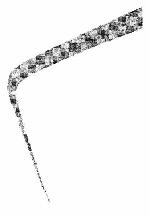
Pirelli's tire groove remains registered as an EU Trademark
After almost 10 years, the dispute over the PIRELLI figurative trademark comes to an end with a ruling by the European Court of Justice (ECJ) on 3 June 2021. The European General Court (EGC) previously ruled that the sign is protectable as a trademark because it does not depict a technical effect of the protected product. This ruling has now been confirmed by the ECJ.

(EUTM No. 002319176; Owner: PIRELLI TYRE S.p.A.)
I. Background of the case
On 23 July 2001, PIRELLI TYRE S.p.A., filed an application with the European Union Intellectual Property Office (EUIPO) for an EU trademark for the figurative sign shown above. This sign was subsequently registered as a Community trademark (now called European Trademark) on 18 October 2002.
On 27 September 2012, The Yokohama Rubber Co. Ltd. filed an application with the EUIPO for a declaration of invalidity of the disputed mark for the goods "tires, solid tires, semi-pneumatic tires and pneumatic tires for vehicle wheels of all kinds” in Class 12. As a result, the Cancellation Division of the EUIPO declared those goods of the disputed mark and, in addition, the goods "rims and covers for vehicle wheels of all kinds", to be invalid.
On appeal by PIRELLI TYRE S.p.A., the Board of Appeal (BoA) partially annulled the decision, but, upheld the invalidity of the disputed mark for "tires, solid, semi-pneumatic and pneumatic tires for vehicle wheels of all kinds”. The proceedings ended up before the EGC, since PIRELLI TYRE S.p.A. took the legal view that a ground for invalidity according to Art. 7 (1) (e) of Regulation (EC) 40/94 did not exist. The EGC shared this opinion and annulled the declaration of nullity.
On 03 June 2021, the ECJ ruled on the appeals under Art. 256 (1) TFEU and Art. 58 (1) of the Statute of the Court of Justice of the European Union of EUIPO and Yokohama Rubber Co. Ltd. in joint proceedings.
II. Decision of the ECJ
First, Yokohama Rubber Co Ltd raised the complaint of adulteration. However, this was rejected by the ECJ as inadmissible, since it was not specified exactly which errors of assessment the EGC had made in its view that led to a distortion of the facts.
Further, the ECJ points out that the appeal is limited to points of law. Thus, the objections raised by the complainants regarding the evaluation of evidence and the assessment of facts in the challenged judgment of the EGC were also rejected as inadmissible, since they do not concern points of law. The ECJ also rejected the allegation that the GCJ's judgment was inconsistent by referring to the overall consideration of the judgment.
It was also criticized that the EGC assumed that the EUIPO had to add further information for the assessment of a technical function of the representation and thus unlawfully added elements to the disputed mark. It was considered that the sign represents a groove and thus a component of the tread, which in turn is only a component of a tire. Here, the ECJ clarifies that the court judicially assumed that the EUIPO could include further material in its assessment if it did not consider the disputed mark as "representing a tire tread".
Furthermore, the decision raised the question of how the absolute ground for refusal in Art. 7 (1) (e) (ii) of Regulation No 40/94 must be interpreted. The EGC assumed that only signs that constitute an essential part of the goods in quantitative and qualitative terms can achieve a technical effect. However, according to the ECJ, the review of this assessment could be left undecided, since already no evidence was provided that a single groove in the disputed form is at all suitable to achieve a technical effect.
Lastly, the ECJ ruled that there was no error of law in finding that the registration of the disputed mark was not capable of preventing Pirelli's competitors from marketing tires having a shape identical or like the shape of that mark when that shape is combined with other elements.
III. Conclusion
This presented decision refers to Regulation (EC) 40/94, which has been replaced by Regulation (EU) 2017/1001. However, given the wording of the new regulation, this case law may continue to be relevant. But this remains to be seen.
For more information read the full decision here: https://curia.europa.eu/juris/document/document.jsf?text=&docid=242042&pageIndex=0&doclang=EN&mode=lst&dir=&occ=first&part=1&cid=14087443
Related
- "Neuschwanstein" is not a trademark!
- 1 December 2017: Madrid Monitor takes its place as the one and only tool for tracking international trademarks
- 1 January 2020 - Changes in Classifications - Trademarks, Designs, Patents and Utility Models
- 100th Anniversary of Bavaria (Germany) - A glance at trademarks, start-ups, innovation & events
- 10th Anniversary Edition - 10 Things to Know about LexDellmeier - Past, Present & Future
- 14 June 2013: Munich Patent Law Conference - Calculating Damages in Patent Infringement Cases
- 15 Top Brands - Interactive Brand Rating - Years 2000 - 2018
- 15 Years LexDellmeier - 2024 New Year Wishes
- 2014: Statistics for Community Trademarks
- 2024 World IP Day - Building Our Common Future with Innovation and Creativity
